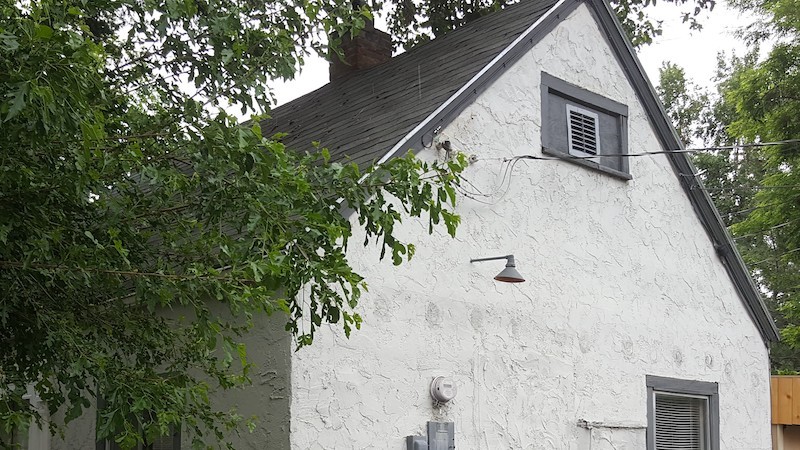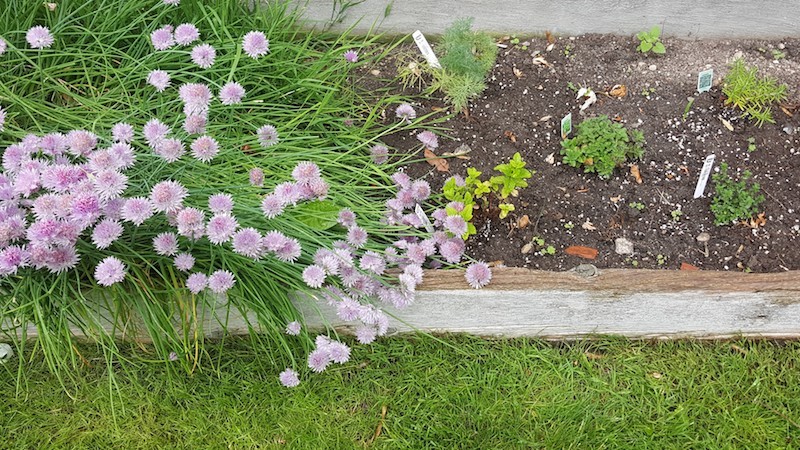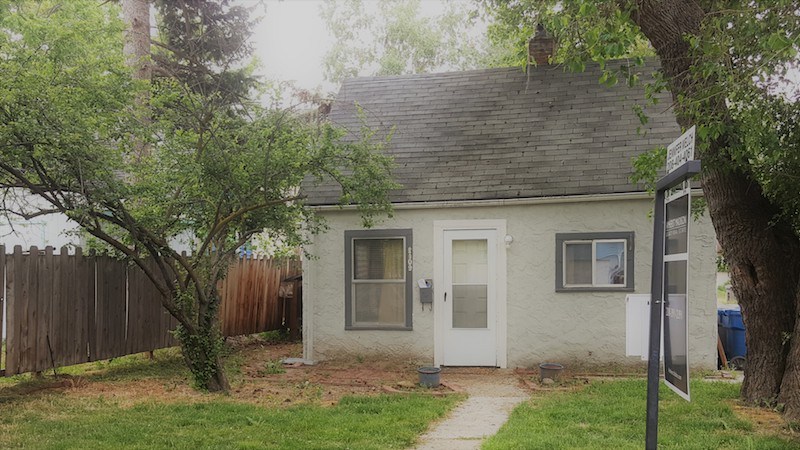Notes from a Nosey Neighbor
My next-door neighbor recently put his house up for sale. His tiny house. It’s 330 square feet total, with a nice front yard and surrounded by standard sized homes. From the day he hammered the For Sale sign in the yard, I’ve been privy to all the comments, judgments, and assumptions made by passersby who come across the property.
My neighbor is a good friend, and he’s passionate about tiny living, so I feel a certain, shall we say, allegiance to his tiny house. My allegiance has turned me into that neighbor — the one who sits by the window with a notebook and pen, scratching down notes in order to publicly prove people wrong later. It may not be that great for my mental health; I might be getting a little crotchety, but if it helps shed light on the awesomeness of tiny living, it’s more than worth it.
“I love my yard too much to give it up for a tiny house.”
—A retiree peeking through a notch in the backyard fence
Yes, tiny living is about scaling down, about minimizing your impact, but that’s only indoors. One of the things that tiny home dwellers love about the lifestyle is that when your indoor space is reduced, you tend to spend more time outdoors. Instead of vegging out in front of the television, why not relax with a book in the backyard? Or better yet, for tiny homes on wheels, why not drive into nature and enjoy the scenery right at its heart?
For those who feel the powerful pull of land and stewardship and belonging in one place, a small garden sanctuary can be the perfect retreat. There are tricks you can use to optimize growing space. Plant vertically instead of horizontally. Use lush foliage and natural stone to create a majestic walkway. Use a variety of colors and textures in your landscaping elements and be aware of both height and depth. A flat yard, just grass alone, only serves to make the space feel smaller.

“I just have too much stuff for a place like this.”
—A woman standing on her tiptoes peering into living room window
Having too much stuff is a common complaint from people who have never tried to live small. Mostly it’s a psychological hurdle. It’s amazing how few possessions a person really needs to survive. Most possessions can fit into a surprisingly small space, and there will always be the option of a storage unit for the overflow.
That brings us to the two main keys to small living: organization and creativity. Creative storage space is a point of pride for many tiny home dwellers. If you ask one about storage, you’re more than likely to get an in-depth description of hidden cupboards under staircases, tables that fold out from the walls, and storage bins tucked beneath the bed and floorboards. Once a person pares down to the essentials, the only spacial limitations are that of the imagination.
“At least the utilities must be cheap?”
—A passerby holding a hard hat under his arm
It’s generally safe to assume that the utilities in a tiny house cost less than a standard home, but at the same time that assumption discounts all the effort that homeowners put into energy conservation and awareness.
While the heating and cooling costs in small spaces are obviously going to be less than their large-scale counterparts, tiny home dwellers still have to pay close attention to phantom energy drainers like outdated appliances, hot-burning light bulbs, and plugged-in electronics. No matter the size of one’s living space, an environmentally low impact lifestyle takes constant vigilance and growth.

“My dog would destroy this place.”
—A young woman walking a dog
Not every pet is going to be content in a tiny house, but there’s no need to discount small living just because you have a pet. Certain low-energy dog breeds like bulldogs, basset hounds, Boston terriers, and even greyhounds are really quite suited to small living.
Surprisingly, size doesn’t have much to do with which breeds do the best in small spaces (aside from accounting for the fact that you don’t want to feel squished up against a furry, slobbery giant all the time). It all comes down to the animal’s temperament and how much exercise they need to stay physically and emotionally healthy.

“When I buy a house, I’m putting my money towards a real home, not a tiny fad.”
—A corporate-looking guy in his mid-twenties lingering in front of walkway, arms crossed
Full disclosure, this one just irritates me. People have been living tiny for eons. Traditional circular-framed yurts have been an integral part of Central Asian culture for at least three thousand years. They’ve stuck around so long because though they’re small in size, they have some serious capacity — a standard 20’ yurt can sleep around nine people.
Needless to say, three thousand years of livable space is a fad I’m willing to invest in.
“It’s Just. So. Tiny.”
—Everyone, ever.
Yes, my neighbor’s house is tiny. The passersby are correct. I can only hope, as I sit here with my slightly irate notes in hand, that the person who buys it will love their new home for its tininess, not in spite of it.

It looks really cute and I’d be interested…if I weren’t planning on something more mobile. Good job addressing some of the most common complaints and misconceptions. I wish your neighbor lots of best wishes in selling. I hope the next neighbor is cool so you can be friends with them, too.
Thanks for featuring a small home that is on a foundation. This one looks just like my childhood storybook version of the ideal home – The Little House – and I only wish we could get a peek inside! Living in New England, where there are many post WWII neighborhoods featuring GI starter homes based on the Half Cape model – these houses just look normal to me. Most of them are about 500 to 600 sf or so – Yes, rear additions or raised attic rooms came to many with the growing families of those times – but they worked well for those of us in the boomer generation – and like I said, it just feels right sized!
What do I think? I think it’s cute! It would be no good for my family, but it would be a lovely retreat for me when I needed some quiet time!
one burning question is, what is his asking price? what’s the lot size? nice details to include with your story.